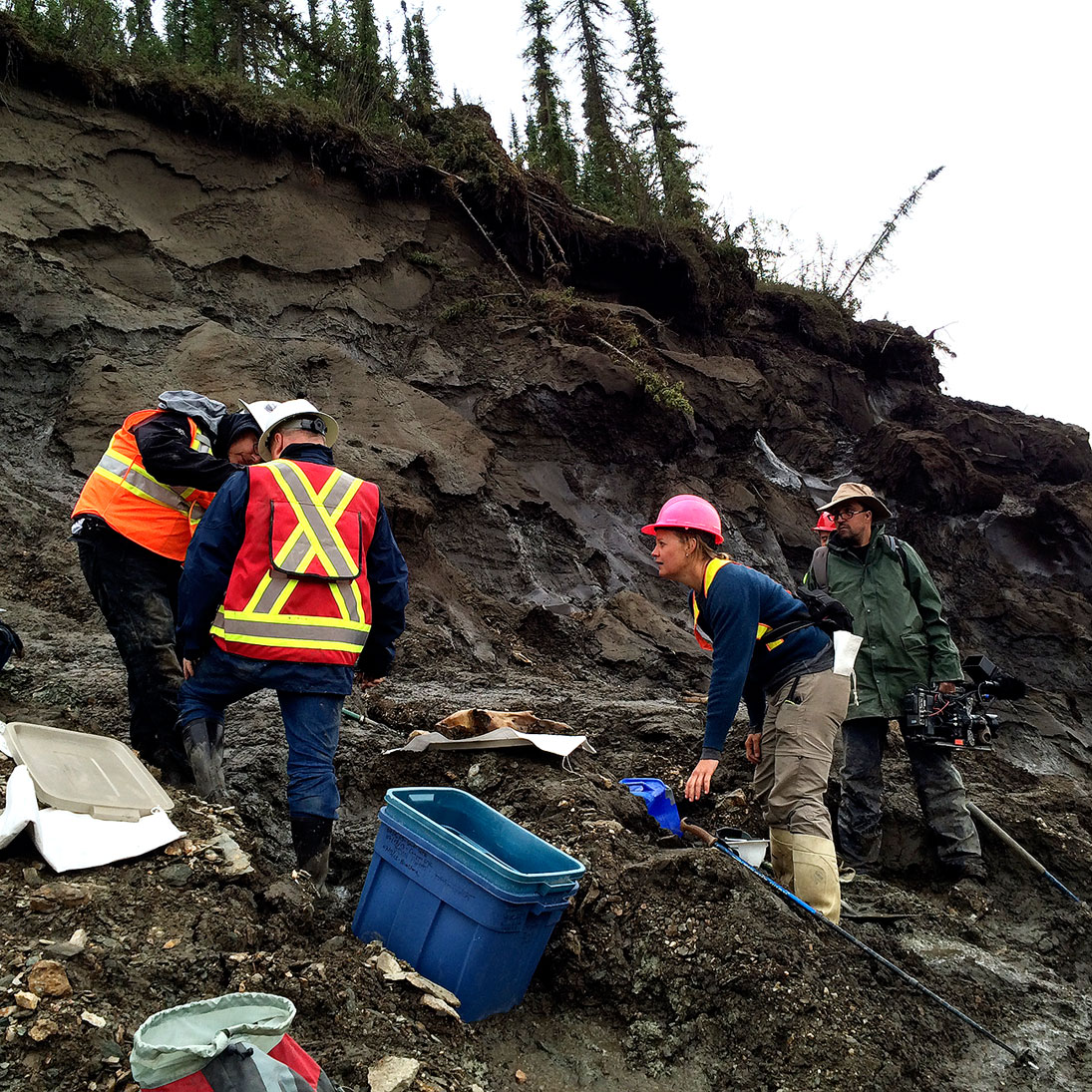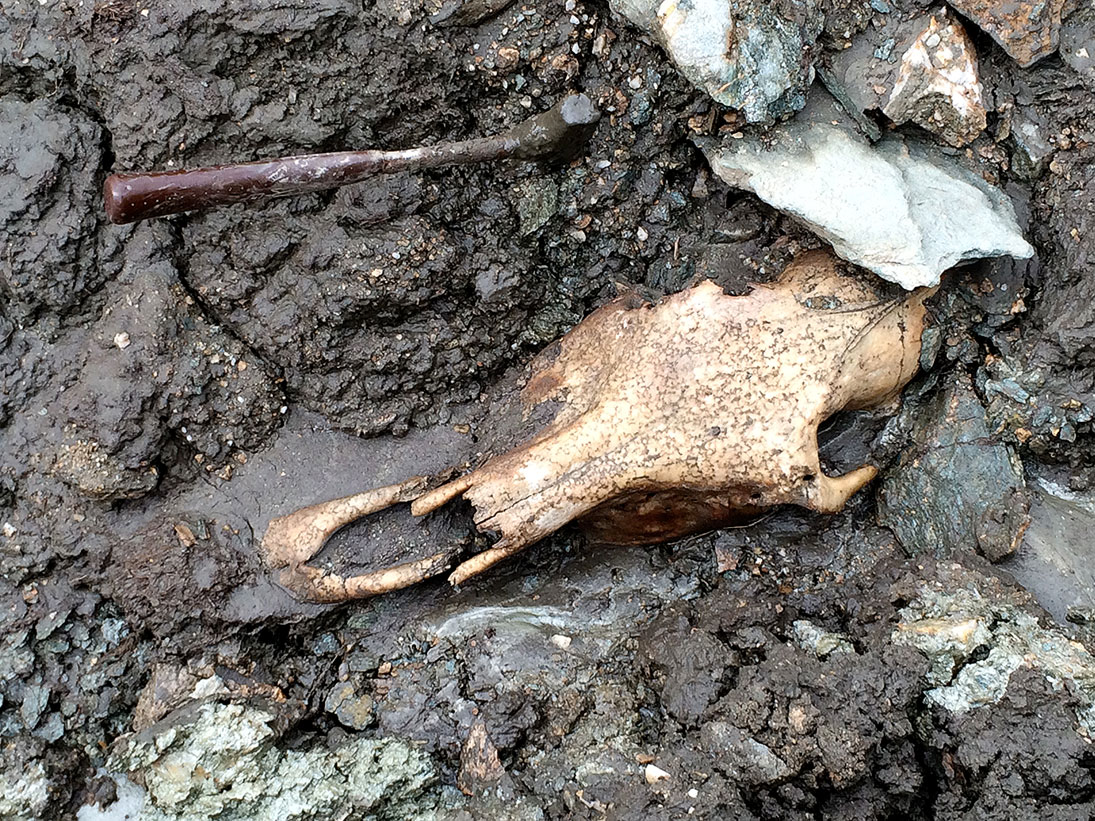A rare find – a fully intact ice age horse skull – discovered last week around Canyon Creek near Dawson City will be part of a research project looking at the size of ice age horses in the territory.
The skull was discoverd at a mine in the area owned by Stuart Schmidt.
As Yukon government paleontologist Grant Zazula said in an interview this morning his crew was on the site as Schmidt did work to get through permafrost as part of the mine operation.
Zazula said his department has worked with Schmidt many times, unearthing ice age fossils from a number of mine sites.
As Zazula described it, for some unknown reason, Schmidt’s “mine sites are incredible grave yards” for ice age animals.
“We were just poking around,” Zazula said as he described his crew following mine site employees working through the permafrost using hydrology equipment as part of the mining operation.
The paleontology crew members look for bones and fossils that come up from the ground as the permafrost is worked through.
In this case, a German film crew was on-site, filming the work of the government staffers as part of a documentary about mammoths and the finding of mammoth fossils at gold mines.
As the film crew recorded the work, what appeared to be a horse skull emerged through the ground.
“It was fun to capture it on film,” Zazula said.
Pieces of an ice age horse skull are not uncommon, Zazula said.
What made this find unusual was that the skull was fully intact.
“We pulled it out complete,” he said, describing it as a “good size.”
While the government crew is set to continue working at the mine site for the remainder of the summer as mining staff work their way through permafrost, Zazula said the skull will also be studied to see what it can tell researchers.
It will be looked at along with the approximately 200 to 300 other ice-age bones from various animals ranging from lions to mammoths to moose and others that come up any given day at the mine site.
The age of the skull will be determined using radiocarbon dating.
It will then be used as part of a project Zazula is working on looking at the possible populations of ice age horses in the territory, when they lived and where and how skull size was or wasn’t related to the body size.
As Zazula said, there’s evidence that some types of ice age horses had tiny bodies, but large heads.
This new find will help advance the research underway, he said.
As for the film work, viewers of Terra X in Germany (described by Zazula as being similar to the CBC show The Nature of Things) will be the first in the public to view the find with this episode focused on mammoths scheduled to telecast on Christmas Day.


Be the first to comment